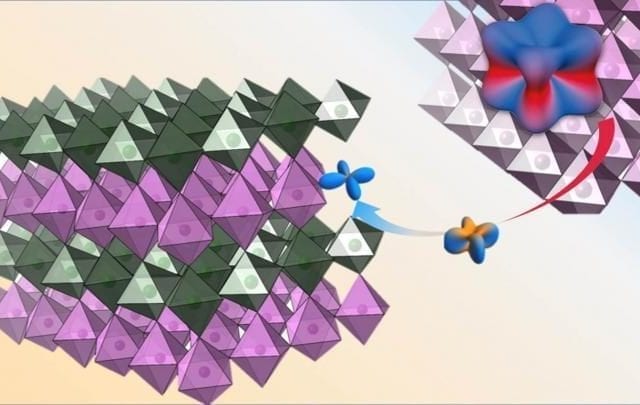Iridium “loses its identity” and its electrons act oddly in an ultra-thin film when interfaced with nickel-based layers, which have an unexpectedly strong impact on iridium ions, according to Rutgers University-New Brunswick physicist Jak Chakhalian, senior author of a Rutgers-led study in the journal Proceedings of the National Academy of Sciences.
Intel Updates Advanced Packaging Technologies at SEMICON West Part 3
The SEMICON West workshop was unusual in that all the presenters were from Intel’s Assembly Test Technology Development (ATTD) group, and the session kicked off with a review of ATTD by Corporate VP Babak Sabi. The scope of their activities ranges from wafer sort, die preparation, and identifying known good die, through assembly, test, die finish, and board development, and also substrates, tooling, and other assembly materials; so pretty well the whole spectrum. They have quite the complex in Chandler (Arizona), as well as other facilities in Oregon and Malaysia.
Revolutionizing Wafer Testing to Bring New Technologies to Market
Nearly every new technology breakthrough in the semiconductor industry targets high volume manufacturing and comes with its unique specificities. This results in challenges for engineers to manufacture and test new integrated circuits (ICs) on the wafer.
MagnaChip Targets Fast-Growing e-Bike Market with High-Performance MOSFET
MagnaChip Semiconductor Corporation, a designer and manufacturer of analog and mixed-signal semiconductor products, announced today the release of a 100V Mid-Voltage MOSFET with a new thermal package designed for the fast-growing e-Bike market. This MOSFET with M2PAK-7P is suitable to meet the particular requirements of electric bike (e-Bike) systems.
Tachyum Joins Intel, AMD, and nVidia With New Headquarters in Santa Clara
Tachyum, a semiconductor startup and developer of the world’s first Universal Processor platform, today announced the opening of its new, larger corporate headquarters in Santa Clara to better accommodate the rapidly growing number of customers, partners, vendors and its growing personnel ranks. The new offices are located at 2520 Mission College Blvd, Suite 201, Santa Clara CA 95054. Tachyum’s new facilities will better enable the company to finish development, start marketing and selling its disruptive products that tackle the most pressing global issues in data centers, AI, telecommunications, edge computing and mobility today.
Erik Pederson Joins Semiconductor Industry Association as Government Affairs Director
The Semiconductor Industry Association (SIA) announced Erik Pederson has joined the association as government affairs director. In this role, Pederson will work with Congress, the White House, and federal agencies to advance the semiconductor industry’s policy priorities, particularly those related to trade, export control, and tax. SIA represents U.S. leadership in semiconductor manufacturing, design, and research.Pederson most recently served as director of government relations at the Chicago Council on Global Affairs, a bipartisan think tank.
Cree Announces Update to Capacity Expansion Plan
Cree, Inc. today announced plans to establish a silicon carbide corridor on the East Coast of the United States with the creation of the world’s largest silicon carbide fabrication facility. The company will build a brand new automotive-qualified 200mm power and RF wafer fabrication facility in Marcy, New York, complemented by its mega materials factory expansion currently underway at its Durham headquarters.The new fabrication facility, part of a previously announced project to dramatically increase capacity for its Wolfspeed silicon carbide and GaN business, will be a bigger, highly-automated factory with greater output capability.
Illinois Researchers Develop New Framework For Nanoantenna Light Absorption
Harnessing light’s energy into nanoscale volumes requires novel engineering approaches to overcome a fundamental barrier known as the “diffraction limit.” However, University of Illinois researchers have breached this barrier by developing nanoantennas that pack the energy captured from light sources, such as LEDs, into particles with nanometer-scale diameters, making it possible to detect individual biomolecules, catalyze chemical reactions, and generate photons with desirable properties for quantum computing.
A New Way to Turn Heat Into Energy
An international team of scientists has figured out how to capture heat and turn it into electricity. The discovery is based on tiny particles called paramagnons–bits that are not quite magnets, but that carry some magnetic flux. This is important, because magnets, when heated, lose their magnetic force and become what is called paramagnetic. A flux of magnetism–what scientists call “spins”–creates a type of energy called magnon-drag thermoelectricity, something that, until this discovery, could not be used to collect energy at room temperature.
SEMI, SUNY Poly Awarded $6 Million National Science Foundation Grant for Pilot Program to Grow Electronics Industry Talent Pipeline
SEMI, the global industry association representing the electronics manufacturing and design supply chain, and SUNY Polytechnic Institute today announced that they have been awarded a $6 million grant from the National Science Foundation (NSF) to fund workforce development initiatives for the microelectronics manufacturing industry. The funding, to be provided over three years, will support the development and implementation of a semiconductor workforce certification program designed to meet the industry’s most pressing needs.
